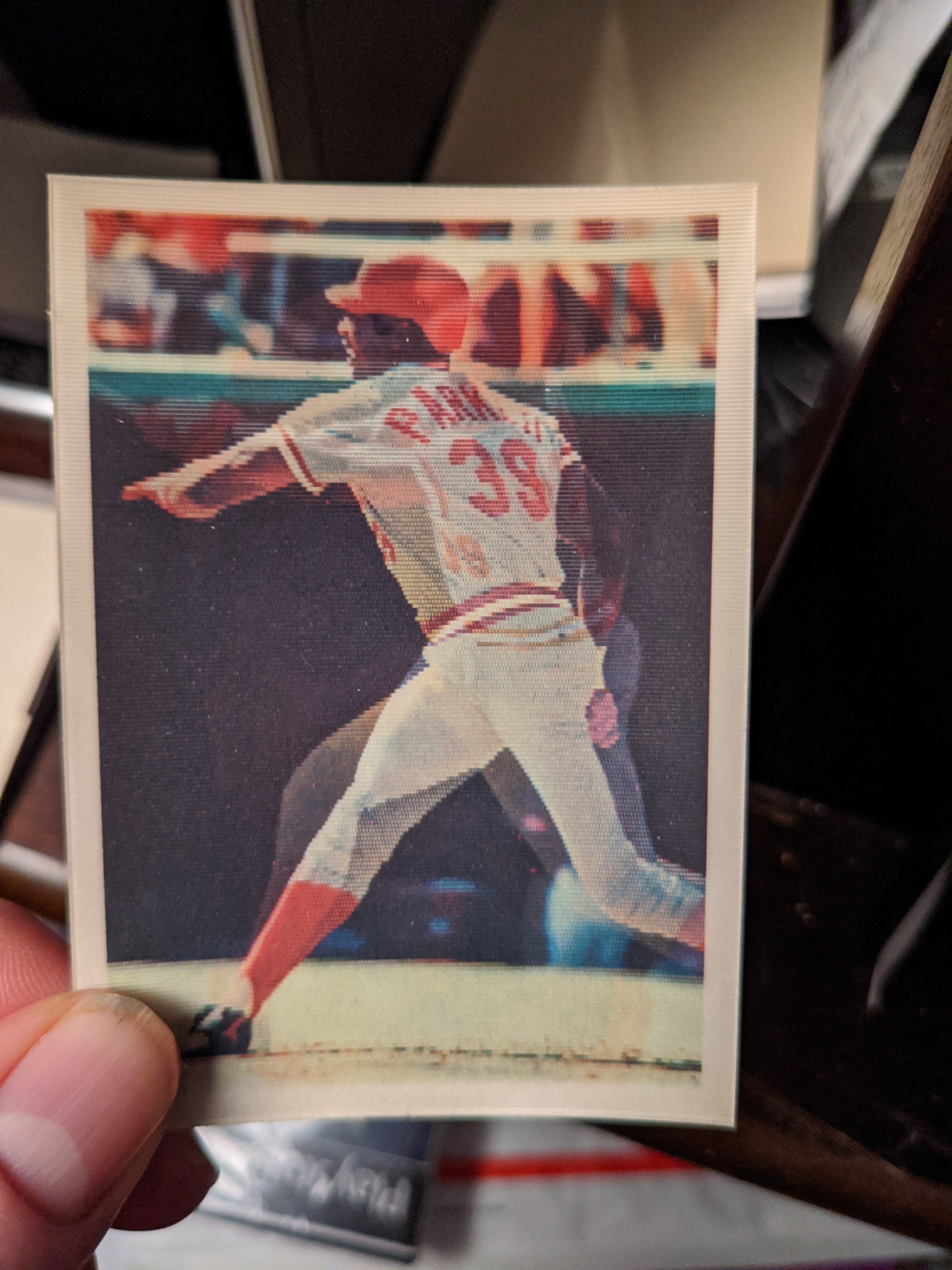A Deep Dive into Lenticular baseball Cards
Lenticular baseball cards, with their mesmerizing 3D effects and captivating animations, have captivated collectors and casual fans alike. These unique cards, a departure from the traditional flat images, offer a dynamic and engaging experience, elevating the humble baseball card to a new level of artistry and collectability.
This article will delve into the fascinating world of lenticular baseball cards, exploring their history, production process, key sets and players, and their enduring appeal in the modern collecting landscape.

Before we dive into the realm of baseball cards, it’s crucial to understand the technology behind these captivating creations.
While the concept of lenticular printing dates back to the 19th century, its widespread use gained traction in the mid-20th century. Early applications included:

Advertising: Eye-catching displays for billboards and point-of-sale materials.
The marriage of lenticular technology with the beloved pastime of baseball proved to be a winning combination.
Sporadic attempts at lenticular baseball cards emerged in the mid-20th century, often as promotional items or limited-edition releases. These early efforts, while intriguing, were often hampered by production limitations and inconsistent quality.
A watershed moment arrived in 1968 with the release of the Topps 3-D Baseball card set. This groundbreaking collection, featuring 132 cards, showcased players in dynamic action poses with a remarkable sense of depth.
Production Challenges: Producing these cards presented significant challenges. Topps collaborated with Visual Panographics, a pioneer in lenticular printing, to overcome technical hurdles and achieve the desired 3D effects.
Following the success of the 1968 Topps set, other companies experimented with lenticular baseball cards. Notably, Kellogg’s, in collaboration with Optigraphics, produced a series of 3-D baseball cards in the 1970s.
Breakfast Cereal Promotion: These cards were primarily distributed as part of breakfast cereal promotions, making them widely available to young collectors.
The late 20th and early 21st centuries witnessed a resurgence in lenticular baseball cards, with advancements in printing technology leading to more sophisticated and visually stunning effects.
Pinnacle Brands: Following the success of the Kellogg’s cards, Optigraphics, the company behind the Kellogg’s sets, evolved into Pinnacle Brands. Pinnacle became a major player in the sports card market, releasing numerous lenticular sets throughout the 1990s and 2000s.
The enduring appeal of lenticular baseball cards can be attributed to several factors:
Nostalgia: For many collectors, these cards evoke a sense of childhood nostalgia, harkening back to a time of simpler pleasures and collecting treasures.
For those interested in collecting lenticular baseball cards, here are a few tips:
Start with a Budget: Determine how much you are willing to spend on your collection.
As technology continues to evolve, we can expect to see even more innovative and visually stunning lenticular baseball cards in the future.
Virtual Reality and Augmented Reality: The integration of virtual reality (VR) and augmented reality (AR) technologies could unlock new dimensions of interactivity, allowing collectors to engage with their cards in unprecedented ways.
Lenticular baseball cards represent a fascinating intersection of art, technology, and sports. Their unique blend of visual appeal, collectability, and nostalgic value ensures their continued popularity among collectors and fans alike.
As we move forward, these captivating cards will undoubtedly continue to evolve, pushing the boundaries of creativity and offering new and exciting ways to experience the thrill of the game.
I hope this comprehensive article provides a valuable overview of the world of lenticular baseball cards.



